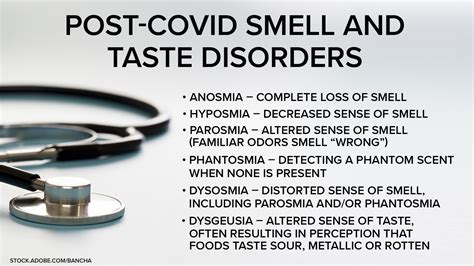As we begin to slowly unravel the mystery hidden behind the current pandemic, novel clinical manifestations are emerging ceaselessly following SARS-CoV-2. Olfactory dysfunction, which has become one of the sought-after clinical features of COVID-19, has been associated with less severe disease manifestation.1 Yet, the previously deemed ‘fortunate’ patients with olfactory dysfunction who successfully recovered from COVID-19 are now being afflicted by another sinister condition known as parosmia, which is found to be more debilitating than loss of smell. Parosmia or distortion of smell is currently regarded as one of the long COVID-19 syndrome or chronic COVID-19 syndrome. Carfi et al found that 87.4% of patients in their study who recovered from COVID-19 had at least one persistent symptom with loss of smell among them.2 However, recent reports have discovered that a number of patients with loss of smell or anosmia regained their smell, yet surprisingly this time, the smell was distorted. The magical aroma of coffee had turned into a nightmare as coffee began to smell pungent like gasoline and favorite dishes were turning to smell more like rotten food or garbage, which inadvertently affects taste as food becomes almost unpalatable. The word parosmia is taken from the Greek words: para and osme (smell) which is defined as a distortion of smell with the presence of odorant, whereas phantosmia is a condition when there is a distortion of smell with the absence of odorant. Anosmia, on the other hand, means complete loss of smell. As of the latest report, three hypotheses exist to explain the pathophysiology of olfactory dysfunction secondary to COVID-19, which include: (1) Mechanical obstruction ensuing the inflammation around the olfactory cleft, which prevents the odorants from binding with the olfactory receptors,3 (2) infection of the ACE-2 expressing supporting cell, mainly the sustentacular cell of the olfactory epithelium4 and (3) direct invasion of olfactory neurons by SARS-CoV-2, which impedes the olfaction transmission.5
For More Information: https://pmj.bmj.com/content/postgradmedj/early/2021/03/31/postgradmedj-2021-139855.full.pdf
